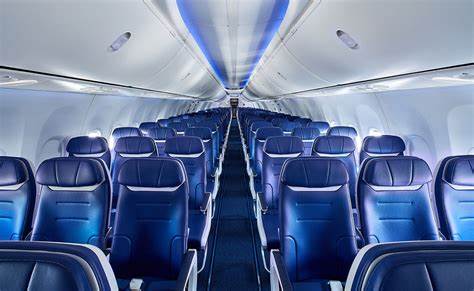Starting this week, Southwest Airlines passengers will notice a change in how the airline manages its cabin service. These changes, which affect when in-flight service will end, are part of the airline’s ongoing commitment to safety. Let’s take a closer look at what’s changing and why.
New Procedures: Ending Cabin Service Sooner
As of Wednesday, the cabin service procedures at Southwest Airlines will be altered. Flight attendants will begin prepping the cabin for landing at 18,000 feet instead of at the previous 10,000 feet altitude. This means in-flight service will end roughly 10 minutes earlier than is normally the case. Passenger seat backs will also need to be raised and their tray tables stowed a little earlier than they are typically used to.
The reason behind this change is to enhance safety. In particular, it is aimed at reducing the risk of injuries caused by turbulence, which can strike unexpectedly during flights. By preparing the cabin earlier, the airline hopes to mitigate the chances of passengers or crew members being harmed in the event of severe turbulence.
Also read: FBI Issues Urgent Warning For Chrome, Safari And Edge Users
Why the Change? Addressing Turbulence Risks
This change is part of a broader safety strategy that Southwest is working on with labor partners to address safety management. The airline said that the well-being of both passengers and employees is their top priority. This change in cabin service timing is one of the many steps the airline is taking to ensure its flights are safe.
The decision to change cabin service procedures comes in the wake of some severe turbulence incidents that have made headlines in recent months. There is an increase in injuries as a result of turbulence aboard airlines worldwide, with greater concern over in-flight turbulence.
Turbulence-Related Injuries: An Increasing Cause for Concern
Recent turbulence incidents have alarmed the airline industry. The most shocking incident occurred early this month, where severe turbulence on a Scandinavian Airlines flight sent passengers bouncing out of their seats with some screaming in fear. A similar incident happened on an Air Canada flight in October where food and drinks were thrown across the cabin due to turbulence that was so intense.
In August, turbulence in the flight led to hospitalization for four American Airlines flight attendants. Moreover, a United Airlines passenger suffered medical issues when rough air occurred on the passenger’s flight. One of the most tragic cases took place in May when the intense turbulence on Singapore Airlines led to the death of one passenger and injuries for 30 passengers. No wonder why airlines like Southwest have had to take further precautions on the aircraft.
Climate Change and Turbulence: What to Expect
Turbulence is not a new problem for air travel, but experts say it could worsen in the years ahead because of climate change. According to Paul Williams, professor of atmospheric science at the University of Reading, the atmosphere is getting more turbulent, and the frequency and intensity of turbulence during flights will increase. This may make turbulence more severe on future flights.
Role of FAA in Passenger Safety Ensured
The Federal Aviation Administration, or FAA, has for decades been working to reduce risks associated with turbulence. FAA advises that passengers must fasten their seat belts whenever the seatbelt sign is on and also when the seatbelt sign is off as they are always at risk of injury by unexpected turbulence.
As the airline industry continues to face turbulence, airlines like Southwest are proactively doing everything to ensure the safety of its passengers and crew members. One of the ways the airline is doing this is through its new procedures that adapt to the changing landscape of air travel.
Conclusion: A Safer Flight Experience
While Southwest’s new procedures mean that the end of cabin service may happen a little earlier in some cases, they are essentially designed to keep everyone safer on board. Passengers are urged to follow the instructions of the crew, stow their trays a little earlier, and fasten their seatbelts. These are changes that might become common in air travel as climate change makes the atmosphere turbulent.
Southwest’s focus on safety is a reminder that, while turbulence is the inevitable part of any flight, preparation always decreases the chances of this unfortunate event.








